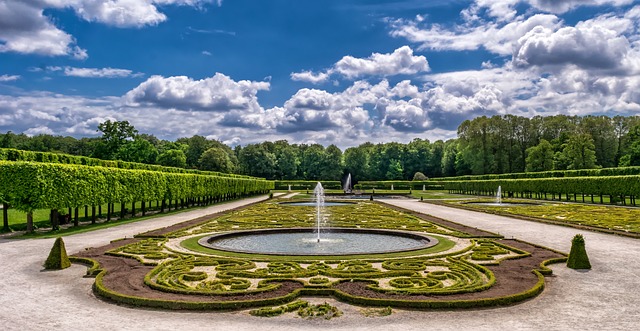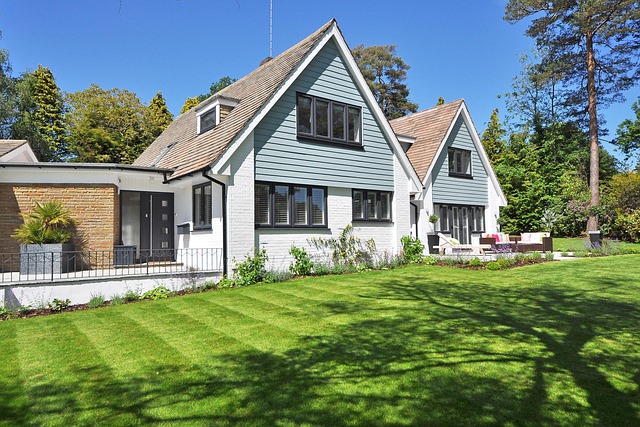Designing a beautiful, welcoming, and safe outdoor space for you and your furry friends involves careful planning and thoughtful selection. Prioritize non-toxic plants to ensure pet safety while incorporating durable, vibrant options for enhanced landscaping. Create open spaces with designated play areas using safe surfaces like grass or gravel. Use low-maintenance shrubs, non-toxic flowers, and interactive elements like treat dispensers for mental stimulation. Choose long-lasting materials for paths and patios, and research plant safety to avoid toxicity risks. Raised beds filled with pet-friendly flora create a secure, visually appealing space. Keywords include: pet-friendly landscaping, safe yard for pets, durable landscaping for pets, and more.
Creating a beautiful and welcoming pet-friendly garden doesn’t have to be a challenging task. With careful planning and the right choices in plants, materials, and design, you can cultivate a thriving outdoor space that’s both safe for your furry friends and low maintenance. This comprehensive guide explores various aspects of pet-friendly landscaping, offering solutions for durable gardening practices, non-toxic plant selections, engaging yard design, and simple maintenance tips to ensure a happy and healthy environment for both pets and plants.
- Choosing Pet-Safe Plants: A Comprehensive Guide to Non-Toxic Flowers and Foliage
- Designing Your Pet-Friendly Yard: Tips for Spacious, Engaging Outdoor Play Areas
- Durable Landscaping Materials: Creating a Safe and Long-Lasting Environment for Pets
- Incorporating Interactive Elements: Encouraging Mental Stimulation Through Dog-Friendly Features
- Maintenance Tips for Low-Effort Pet Yards: Simple Strategies to Keep Your Garden Thriving
Choosing Pet-Safe Plants: A Comprehensive Guide to Non-Toxic Flowers and Foliage

Creating a beautiful and welcoming outdoor space for both you and your furry friends is entirely achievable with careful planning and thoughtful selection of plant varieties. When designing a pet-friendly garden, prioritizing non-toxic plants is paramount to ensuring your pets’ safety while enjoying nature. Here’s a comprehensive guide to help you navigate the process.
When it comes to pet-safe landscaping, research is key. Many common flowers and foliage may appear harmless but can be toxic to cats and dogs if ingested. Lucky for us, there’s an array of beautiful, durable options available that are safe for our four-legged companions. Incorporate plants like lavender, rosemary, and catnip, renowned for their pet-friendliness and aromatic properties. Additionally, consider hardy perennials such as daylilies (not to be confused with the toxic lilies) and sedums, which not only add vibrant colors but are also non-toxic and easy to maintain. These choices not only contribute to a safe yard for pets but also enhance overall pet-friendly landscaping aesthetics.
Designing Your Pet-Friendly Yard: Tips for Spacious, Engaging Outdoor Play Areas

When designing a pet-friendly yard, prioritize open spaces that allow your furry friends to run and play freely without any hazards. Create designated play areas with a mix of grass, gravel, or natural materials for easy maintenance and a safe surface for pets. Ensure these zones are away from any toxic plants or harmful features, making them entirely pet-safe.
Consider incorporating durable landscaping elements like low-maintenance shrubs and non-toxic flowers to add visual appeal without risking your pet’s health. A diverse range of textures and heights not only creates an engaging environment but also provides different types of play opportunities for your pets. Remember that a well-planned, spacious yard can offer a fun and secure outdoor space for both you and your four-legged companions.
Durable Landscaping Materials: Creating a Safe and Long-Lasting Environment for Pets

Creating a pet-friendly garden involves choosing durable landscaping materials that are safe and non-toxic for your furry friends. Opting for long-lasting, pet-resistant options ensures your yard remains a happy play area for years to come, regardless of the antics of energetic pets. Materials like concrete, brick, and certain types of gravel make excellent choices for paths and patios as they’re durable and difficult for pets to dig up or damage.
When designing a pet-safe garden, select plants that are non-toxic to animals, avoiding those with attractive but potentially harmful parts, such as small berries or appealing flowers that could cause ingestion issues. Many common plants like lilies, ivy, and certain types of grapes are toxic to dogs and cats; therefore, it’s crucial to research plant safety before adding any greenery. Additionally, consider raised beds filled with pet-friendly flora to create a safe haven for your pets while still allowing you to cultivate a beautiful outdoor space.
Incorporating Interactive Elements: Encouraging Mental Stimulation Through Dog-Friendly Features

Incorporating interactive elements into your garden design is a fantastic way to create an engaging and stimulating environment for your pets, ensuring they have a safe and enjoyable outdoor space. Pet-friendly landscaping involves integrating features that encourage mental and physical stimulation, providing a refreshing break from routine walks and indoor activities. Simple additions like buried treat dispensers, puzzle feeders, or even a dedicated digging area can keep dogs entertained and mentally challenged. These dog-friendly landscape solutions not only tire out your furry friends but also promote healthy behaviors, such as natural scent marking and digging instincts, in a controlled manner.
When designing a yard for pets, it’s crucial to choose durable landscaping materials and pet-safe garden design elements. Opting for non-toxic plants is essential to prevent any harmful interactions with curious noses and mouths. Certain flowers and shrubs are not only visually appealing but also safe for dogs to sniff, chew, or play with. Additionally, creating designated play areas with sturdy structures like wooden tunnels or rope swings allows pets to exercise their agility and strength safely. These features contribute to a well-rounded pet-friendly yard design that caters to both physical and mental health while ensuring your garden remains low maintenance.
Maintenance Tips for Low-Effort Pet Yards: Simple Strategies to Keep Your Garden Thriving

Creating a low-maintenance, pet-friendly garden requires thoughtful planning and the right strategies. One key tip is to choose durable landscaping materials that can withstand your pet’s playtime. Opt for hardier plants that are non-toxic to pets; avoid delicate flowers or shrubs that could be easily damaged or ingested by curious animals.
Implementing a pet-safe garden design involves creating clear boundaries and safe spaces. Fences, hedges, or dedicated areas with specific pet-friendly features ensure your yard remains inviting for both pets and plants. Regular cleaning and occasional trimming will go a long way in maintaining this space, making it a thriving outdoor haven for you and your furry companions.
Creating a pet-friendly garden isn’t just about aesthetic appeal; it’s about ensuring your furry companions have a safe, engaging, and low-maintenance outdoor space to thrive. By choosing non-toxic plants, designing spacious play areas, selecting durable landscaping materials, incorporating interactive elements, and implementing simple maintenance strategies, you can cultivate a yard that’s as loving towards pets as it is aesthetically pleasing. Embrace these principles of pet-friendly landscaping to craft a safe yard for your beloved animals, fostering their health, happiness, and harmony in your outdoor sanctuary.
